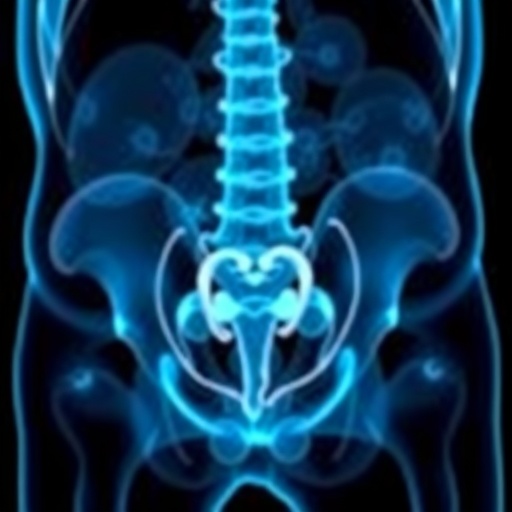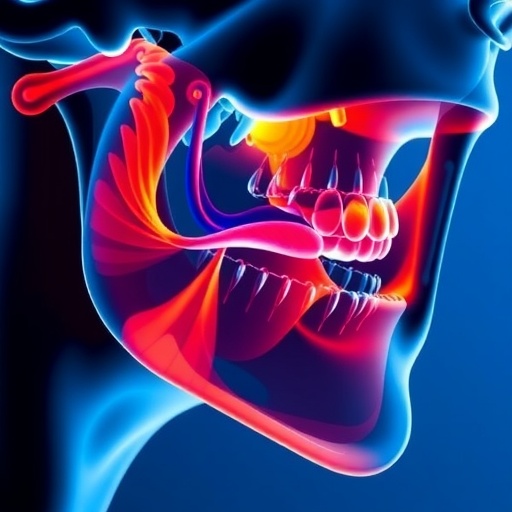In the relentless battle against upper tract urothelial carcinoma (UTUC), a rare and aggressive form of cancer affecting the upper urinary tract, new light has emerged on treatment strategies that could transform patient outcomes. A recent comprehensive systematic review and meta-analysis published in BMC Cancer has spotlighted the promising role of neoadjuvant therapy (NAT) prior to the standard surgical intervention, radical nephroureterectomy (RNU). This pivotal study not only updates the scientific community on treatment efficacy but also delves deeply into survival benefits and pathological responses achieved through NAT in UTUC patients.
UTUC presents a formidable challenge due to its low incidence but aggressive nature, leading to often poor prognoses and limited treatment options. Traditionally, radical nephroureterectomy—the surgical removal of the kidney and ureter—has been the cornerstone of management. However, the clinical community has increasingly explored neoadjuvant therapies, particularly chemotherapy administered before surgery, as a potential game-changer to improve survival metrics and reduce recurrence rates.
The study, conducted by Zhong, Li, Peng, and colleagues, undertook a rigorous meta-analysis of 31 studies, encompassing a substantial cohort of 9,195 UTUC patients. These studies included diverse treatment comparisons: NAT followed by RNU versus RNU alone, NAT versus adjuvant therapy (treatment administered after surgery), and some studies evaluating both comparisons. The multifaceted approach aimed to clarify NAT’s impact on crucial endpoints, including overall survival (OS), cancer-specific survival (CSS), recurrence-free survival (RFS), progression-free survival (PFS), and pathological complete response (pCR).
One of the most striking revelations from the meta-analysis was the significant survival advantage conferred by NAT in conjunction with RNU compared to surgery alone. Hazard ratios indicated that patients receiving NAT exhibited a 54% reduction in mortality risk (HR=0.46) and a notable improvement in cancer-specific survival (HR=0.45). These statistics underscore NAT’s potential not merely as an adjunct but as a pivotal intervention impacting long-term survival in UTUC cases.
Equally compelling were the findings related to recurrence and progression metrics. NAT recipients showed a marked reduction in recurrence risk, with a hazard ratio of 0.56 for RFS, signaling that the therapy substantially hinders cancer’s return post-surgery. More dramatically, progression-free survival showcased an even greater benefit (HR=0.30), suggesting that NAT effectively delays or prevents the advancement of the disease to more severe stages. These outcomes illuminate NAT’s dual role—not only in extending life but in preserving quality of life by curbing cancer aggressiveness.
Pathological complete response rates also painted a hopeful picture. While the pCR rate was modest at 10% in the NAT cohort, it was nonetheless absent in patients undergoing RNU alone. This indicates that NAT can occasionally eradicate detectable cancer prior to surgery, which might translate to better long-term outcomes and reduced reliance on further interventions. Interestingly, subgroup analyses revealed higher pCR rates in prospective studies compared to retrospective ones, hinting at evolving treatment protocols or patient selection criteria in newer trials.
However, the comparison between NAT and adjuvant therapy offered a nuanced perspective. Among the five studies evaluating these modalities, no significant difference in overall survival was identified. Nevertheless, NAT demonstrated superiority in recurrence-free survival, highlighting its ability to preemptively tackle microscopic residual disease that might lead to relapse. This finding positions NAT as a strategic front-line treatment to delay or prevent the resurgence of UTUC post-surgery.
Technically, the meta-analysis incorporated up-to-date literature searching across four major databases—PubMed, Embase, Cochrane, and Web of Science—up to October 2024. This exhaustive search ensured a broad and current representation of clinical evidence. Statistical methods robustly quantified treatment effects, employing hazard ratios and confidence intervals to deliver precise and reliable conclusions. Such methodological rigor heightens the trustworthiness of the findings and provides a strong foundation for future clinical guidelines.
The implications of this study extend beyond immediate clinical practice. They offer an impetus for ongoing research into optimizing neoadjuvant regimens, including combinations with novel agents like immune checkpoint inhibitors or targeted therapies. Furthermore, better identification of patient subgroups most likely to benefit—based on genetic, molecular, or clinical biomarkers—could refine personalized treatment strategies.
Importantly, these findings underscore the need for increased clinical trial activity in UTUC, a domain historically underrepresented in urological oncology research due to the rarity of the disease. Larger, carefully designed prospective trials will be crucial to confirm the observed benefits of NAT, clarify its role relative to adjuvant therapies, and establish standardized treatment protocols that optimize survival while minimizing toxicity.
Another dimension to consider is the quality of life and functional outcomes associated with neoadjuvant therapy. While the current study focused on survival and pathological endpoints, future investigations integrating patient-reported outcomes will provide a holistic view of the benefits and burdens of NAT, ensuring that therapeutic advances translate into meaningful improvements for patients.
From a mechanistic standpoint, the enhanced effectiveness of NAT may relate to its capacity to target micrometastatic disease early, eradicate more chemosensitive tumor clones, and reduce tumor burden before surgery. This preoperative timing also allows for in vivo assessment of treatment response, which could inform postoperative management and identify patients who might benefit from more aggressive or alternative therapies.
Clinicians and patients awaiting breakthroughs in UTUC management can draw cautious optimism from this meta-analysis, which lucidly articulates that neoadjuvant therapy is not a mere adjunct but a potentially transformative component of care. As this evidence permeates clinical guidelines and practice, multidisciplinary collaboration among urologists, medical oncologists, and radiation oncologists will be paramount to harness the full benefits of NAT.
In sum, this landmark study by Zhong and colleagues consolidates the growing body of evidence advocating for neoadjuvant therapy in UTUC. With demonstrable survival benefits, promising pathological responses, and meaningful reductions in recurrence and progression, NAT emerges as a beacon of hope in an otherwise challenging oncologic landscape. The findings stimulate both excitement and resolve within the scientific community to accelerate research and refine therapeutic paradigms for this rare but deadly cancer.
The journey from bench to bedside is making strides, and the integration of NAT into standard UTUC management may soon become an established practice that offers patients a fighting chance against this aggressive disease. Continued vigilance in research, clinical application, and patient-centric care will be essential to fully unlock NAT’s potential in improving outcomes and transforming lives afflicted by upper tract urothelial carcinoma.
Subject of Research: Evaluation of the efficacy of neoadjuvant therapy in the treatment of upper tract urothelial carcinoma through systematic review and meta-analysis.
Article Title: The efficacy of neoadjuvant therapy for upper tract urothelial carcinoma: a systematic review and meta-analysis
Article References:
Zhong, H., Li, Z., Peng, Y. et al. The efficacy of neoadjuvant therapy for upper tract urothelial carcinoma: a systematic review and meta-analysis.
BMC Cancer 25, 1558 (2025). https://doi.org/10.1186/s12885-025-14966-4
Image Credits: Scienmag.com
DOI: https://doi.org/10.1186/s12885-025-14966-4
Tags: challenges in treating upper tract urothelial carcinomaemerging therapies for aggressive cancersimpact of neoadjuvant chemotherapyimproving prognosis in UTUC patientsmeta-analysis of cancer treatment strategiesneoadjuvant therapy for upper tract urothelial carcinomaradical nephroureterectomy outcomesrecurrence rates after nephroureterectomysurvival benefits of neoadjuvant treatmentsystematic review of UTUC therapiestreatment efficacy in urothelial carcinomaupper urinary tract cancer management





